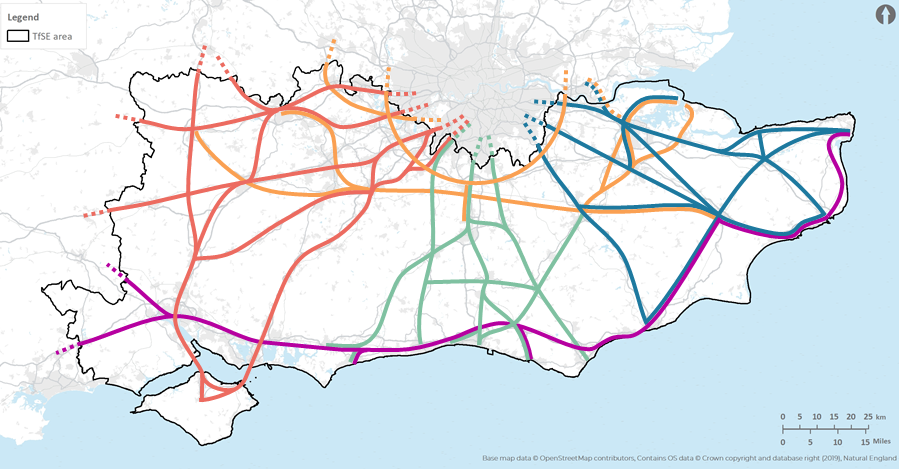Outer orbital area study
The outer orbital area encompasses the strategic corridors that follow the coastline from the New
Read more about Outer orbital area studyTo turn our Transport Strategy from vision to reality, we have worked with partners and stakeholders across the region to determine what the south east’s priority transport schemes, initiatives and policies should be.

We have completed this work using a series of geographic studies based on the most important economic corridors in our region identified through our Economic Connectivity Study. These corridors connect our biggest towns, cities and international gateways as well as where the greatest opportunities for sustainable economic growth exist.
Each of our studies investigated the issues, challenges and opportunities that were identified in our Transport Strategy, in more detail. They also identified a shortlist of interventions to make life for people, businesses and the environment, better.
The outcomes of our area studies have formed the basis for our Strategic Investment Plan – a blueprint for investment which will be delivered with government and national bodies such as Network Rail and National Highways.
The final Strategic Investment plan was submitted to government in March 2023.
Our Area Studies work formed our Strategic Investment Plan Evidence Base
Throughout the development of our investment priorities, partnership working remained at the heart of our approach. We made sure to capture invaluable insight and experience from stakeholders across the south east.
Each of our area studies was led by a working group comprising senior officers from the relevant local transport authorities, local enterprise partnerships and other key partners including Network Rail, National Highways and protected landscapes.
These working groups were supported by a stakeholder forum, that brought together a wide range of groups and organisations including transport operators, active travel campaigners, universities, environmental groups, local planning authorities, business groups and many more.
You can find out which organisations were involved on the individual area study’s pages.